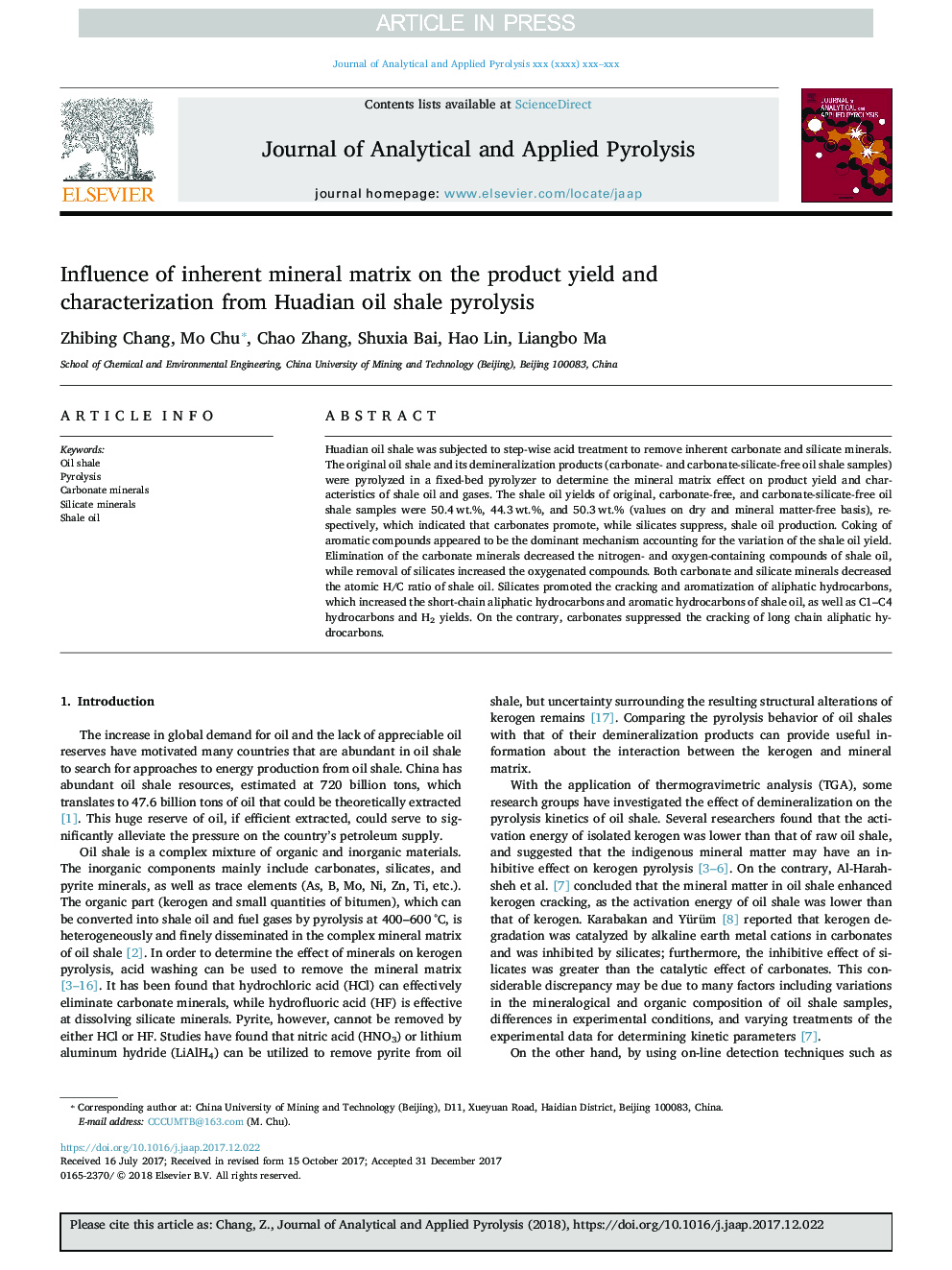| Article ID | Journal | Published Year | Pages | File Type |
|---|---|---|---|---|
| 7606488 | Journal of Analytical and Applied Pyrolysis | 2018 | 8 Pages |
Abstract
Huadian oil shale was subjected to step-wise acid treatment to remove inherent carbonate and silicate minerals. The original oil shale and its demineralization products (carbonate- and carbonate-silicate-free oil shale samples) were pyrolyzed in a fixed-bed pyrolyzer to determine the mineral matrix effect on product yield and characteristics of shale oil and gases. The shale oil yields of original, carbonate-free, and carbonate-silicate-free oil shale samples were 50.4â¯wt.%, 44.3â¯wt.%, and 50.3â¯wt.% (values on dry and mineral matter-free basis), respectively, which indicated that carbonates promote, while silicates suppress, shale oil production. Coking of aromatic compounds appeared to be the dominant mechanism accounting for the variation of the shale oil yield. Elimination of the carbonate minerals decreased the nitrogen- and oxygen-containing compounds of shale oil, while removal of silicates increased the oxygenated compounds. Both carbonate and silicate minerals decreased the atomic H/C ratio of shale oil. Silicates promoted the cracking and aromatization of aliphatic hydrocarbons, which increased the short-chain aliphatic hydrocarbons and aromatic hydrocarbons of shale oil, as well as C1-C4 hydrocarbons and H2 yields. On the contrary, carbonates suppressed the cracking of long chain aliphatic hydrocarbons.
Related Topics
Physical Sciences and Engineering
Chemistry
Analytical Chemistry
Authors
Zhibing Chang, Mo Chu, Chao Zhang, Shuxia Bai, Hao Lin, Liangbo Ma,
